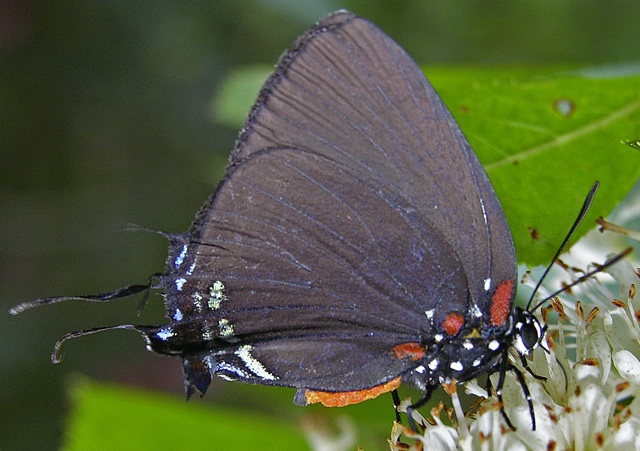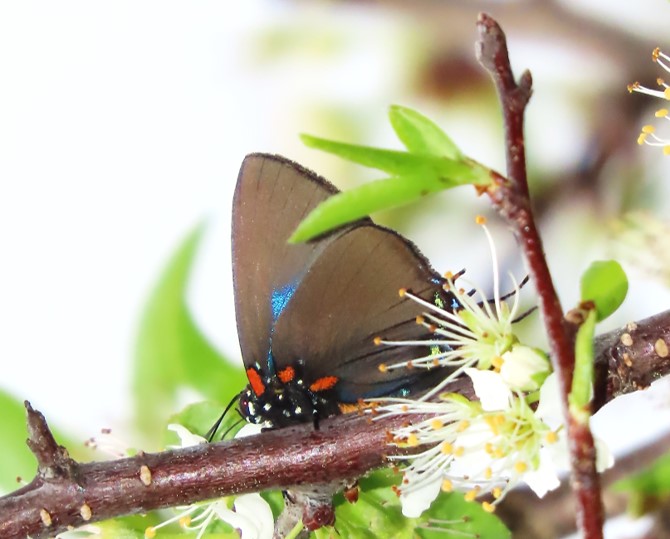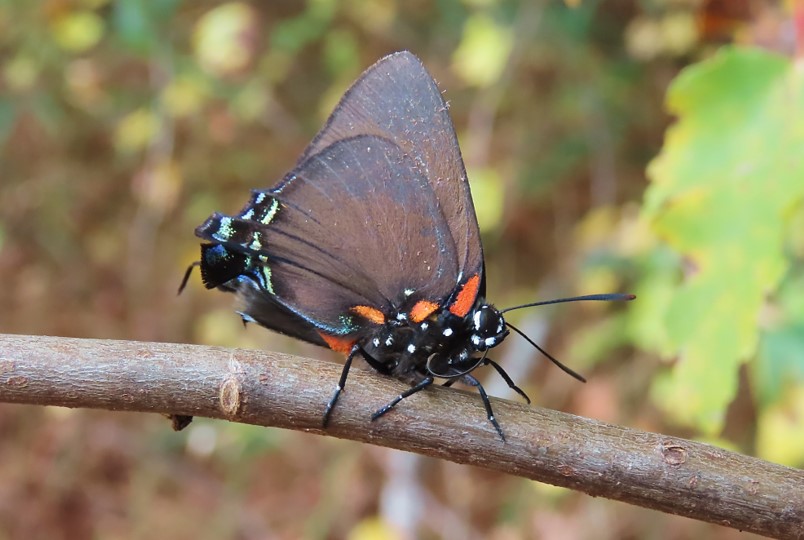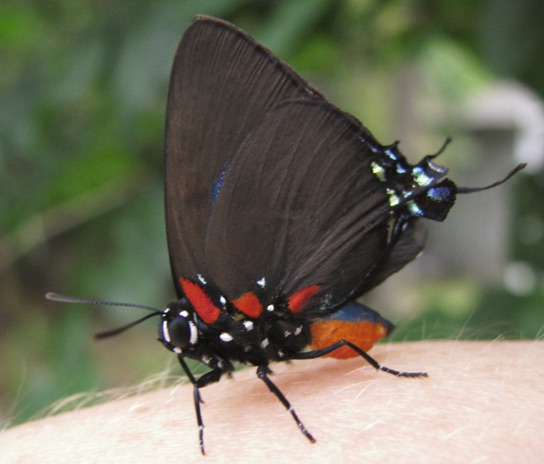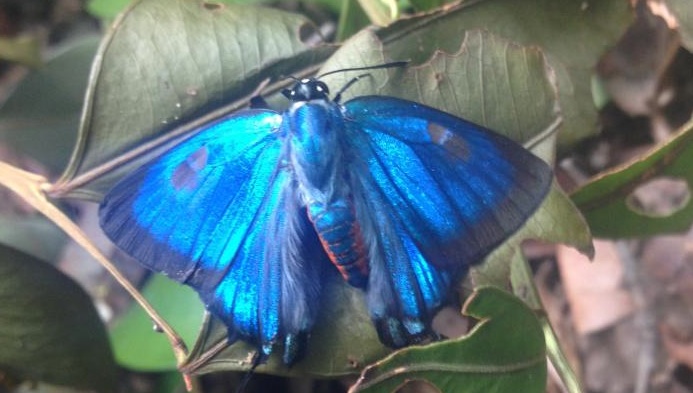|
| Common Name | Great Purple Hairstreak by Paul Hart => Raven Rock State Park, 2004-03-27, Nectaring on Prunus angustifolia
[View PDF]
 Click to enlarge Click to enlarge
[Google Images] GBIF [Global Distribution ] BoA [Images ] iNaturalist |
| Scientific Name | Atlides halesus
|
| Link to BAMONA species account. |
| Map | Click on a county for list of all database records for the species in that county.
 |
| Distribution | DISTRIBUTION: Essentially throughout the Coastal Plain (though no records yet for most counties in the northwestern Coastal Plain), and scattered over most of the Piedmont; very local at lower elevations in the Mountains.
|
| Abundance | ABUNDANCE: Uncommon to locally fairly common in the southern and eastern Coastal Plain, rare in the Piedmont and the northwestern Coastal Plain, and very rare in the southern Mountains. Common in a few places in the Coastal Plain, such as Alligator River National Wildlife Refuge in Dare County. Can be quite numerous in parts of the Coastal Plain in the first half of October; the state's highest count was on October 9.
|
| Flight | FLIGHT PERIOD: At least three flights: mid-March to late April, early May to late June, and mid-July to late October, with the last brood (or possibly two broods) being much more common. The spring broods are quite brief, at least relative to the last one. There is even a remarkable out of season record of one on January 3 (2020)!
|
| Habitat | HABITAT: Usually near moist hardwood forests. Most often seen along edges of bottomland woods and swamps, but also noted in savannas, edges of pocosins, and along roads through moist woods. Not usually seen in dry habitats or far from woodlands. Individuals do "stray" to yards and gardens in search of nectar; however, the species is not to be intentionally looked for, or hoped for, in such cultivated habitats.
|
|
| | Plants | FOOD AND NECTAR PLANTS: American Mistletoe (Phoradendron leucarpum) is the only known foodplant. Adults nectar on many plant species; favorites include goldenrods (Solidago spp.), Climbing Hempweed (Mikania scandens), Coastal Sweet-pepperbush (Clethra alnifolia), Swamp Milkweed (Asclepias incarnata), and Indian-hemp (Apocynum cannabinum). As highest numbers are found in fall, searching stands of blooming goldenrods and Climbing Hempweed can produce one or more Great Purple Hairstreaks, especially in or near coastal counties.
|
| Comments | COMMENTS: This spectacular species is one of the tamest of all butterflies in NC. Nectaring adults seldom flush until touched, and being very conspicuously black against the flowers on which it nectars, one wonders how many are preyed on by spiders and other predators. Although one might tend to look for this species by first locating clumps of mistletoe high in the trees, this is usually not productive. Mistletoe is inconspicuous amid hardwood tree leaves in the growing season, and the butterflies often feed far from the plant. The species, thus, is usually encountered accidentally while searching the flowering plants blooming along the edges of moist forests.
|
State Rank | S4 | | State Status | |
Global Rank | G4G5 | | Federal Status | |
| Synonym |
|
| Other Name | Great Blue Hairstreak
|
|
|

 >>
>>